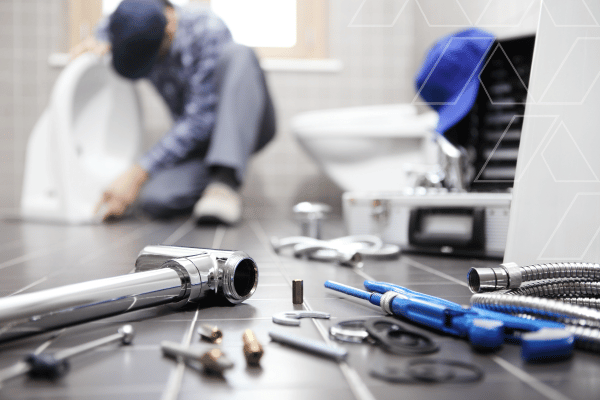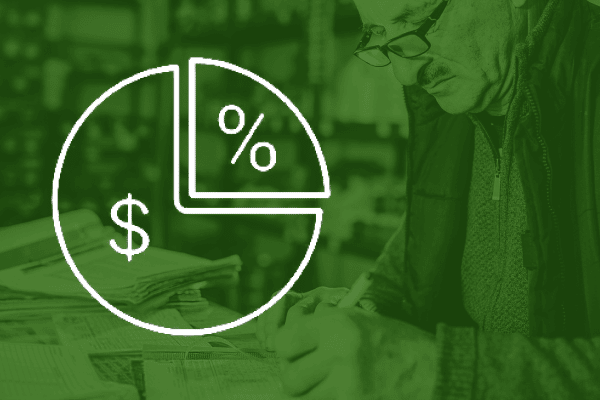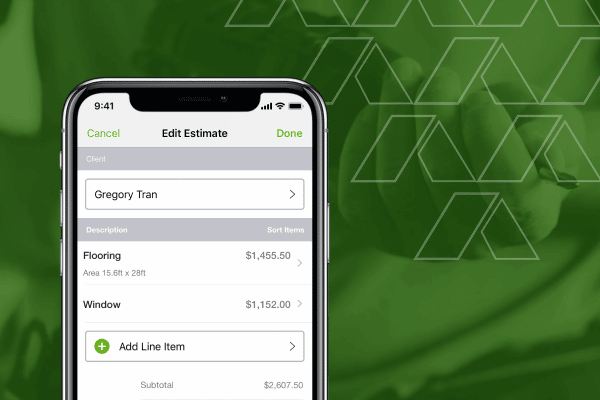Understanding how to price plumbing jobs is one of the biggest obstacles to a profitable plumbing business. Many plumbers find themselves extremely busy but without the profits to show for it.
There are many variables to consider when setting prices, including billable and unbillable hours, overhead, and labor rates to name just a few. There are also the local competition rates to consider.
For your prices to be profitable, you must account for all time and expenses. But it can be hard to know how to estimate plumbing jobs if you aren’t clear on how much time and material each job will need.
This plumbing pricing guide will show you how to properly price your plumbing jobs and how to estimate plumbing jobs to win more bids.
Flat Rate vs Hourly Rates for Plumbing Jobs
The two pricing models used most often in the plumbing industry are the hourly rate model and flat-rate pricing. Depending on what’s best for your plumbing business, you may decide to use one over the other or a combination of the two.
Hourly Rate (Time + Materials) Pricing
The hourly rate (or per hour) model for pricing plumbing jobs bills the customer by the hour at a rate that covers time and materials. The total cost of the job is determined largely by how long it takes to complete.
Hourly rates can be very appealing to some customers because there’s more perceived transparency in the charges. The itemized estimate shows the customer the hourly rate and material costs. However, the customer will also start watching the clock.
Jeremy Lowe, VP of Content & Training at Profit Rhino, a software company that specializes in plumbing flat rate pricing reminds us of the old adage:
You can have it fast, you can have it good, you can have it cheap. But you can’t have all three.
– Jeremy LOWE, VP of Content & Training at Profit Rhino
“Typically, when you start to work, the customer is watching the clock. Which puts pressure on the technician to speed up,” said Lowe.
“When a technician is rushed, he’ll make mistakes but also, he won’t take the time to find the other things that could be contributing to the major problem. Or he may leave things that should have been recommended to the customer.”
The hourly pricing model also costs you more in unbillable hours. Every new project requires time spent on creating new estimates and invoices.
Flat-Rate Pricing
The flat-rate pricing model factors in labor cost, materials, and overhead to create a set price. The customer pays a flat rate for the job, regardless of how many hours it takes to complete.
This model allows you to offer a menu of add-on and upgrade plumbing services that customers can include with the original job. You also won’t need to create a new estimate and invoice for each project, saving you unbillable admin hours.
Pricing plumbing work with a flat rate will also give customers peace of mind knowing how much they can expect to pay when the job is complete. Plus, you know exactly how much money this job will bring to your plumbing business.
Plumbing businesses can see significant bottom-line improvement just by incorporating flat rate pricing. Investing in plumbing estimating and invoicing software can help improve accuracy when you price plumbing jobs.
Profit Rhino’s Jeremy Lowe shared one of his favorite examples with us.
“Fifteen years ago, we were approached by a plumbing contractor who operated out of our former office building,” said Lowe. “Through incorporating flat rate, he was able to move from a one truck new construction plumbing company that didn’t do service to a six-truck service department.”
Having a process to properly evaluate the issue upfront is critical to setting an accurate flat rate. Without an accurate evaluation of the problem, you could find yourself working long hours without proper compensation.
It’s just as important that you know what the average times and materials are for each job to determine a flat rate that will be profitable. Complex jobs that require extensive labor and time and materials are largely unknown, it might be better to use a hybrid pricing model.
Hybrid Pricing
Using a combination of the hourly & flat-rate approach for pricing plumbing jobs may help you get more accurate pricing without cutting into profits and get you closer to your financial goals.
For example, some plumbers choose to use an hourly rate model on large, complex jobs while offering flat-rate prices on smaller, more straightforward jobs like drain cleaning, leak repairs, and appliance installations.
Using a hybrid model also offers flexibility when pricing plumbing jobs. For instance, all plumbing jobs, regardless of size, will require a preliminary inspection to both evaluate the problem and determine the solution.
With hybrid pricing, you can choose to charge an additional fee for the inspection while waiving it on bigger jobs. It also gets customers to stop watching the clock and gives you the space to do quality work.

How to Calculate Plumbing Costs
Regardless of which pricing model you use, it’s critical that you learn how to price plumbing jobs accurately.
Labor costs, the cost of materials, unbillable hours, and additional overhead all need to be accurately accounted for and included in the estimate for your plumbing jobs to be profitable.
How is Plumbing Labor Cost Calculated?
The first step in calculating plumbing labor cost is determining your hourly base rate. That’s the amount you pay your employees or yourself before you add in material and overhead costs.
To estimate your plumbing labor costs, take the amount of money you’d like to earn every week and divide it by the number of billable hours you work
Weekly Income ÷ # of Billable Hours per Week = Hourly Base Rate
For example, let’s say you want to make $900 in a 40-hour work week. Out of those 40 hours, only about 55% will be billable. The other 45% is spent on unbillable things like driving to jobs and administrative tasks. That leaves you with 22 hours of billable time.
We’ll divide your $900 in weekly income by the 22 billable hours and get an hourly base rate of $40.91, which we’ll round up to $41.
Material Costs
It’s important to be thorough when calculating your material costs. Start with an itemized list of all the materials and supplies necessary to do the job. To calculate the exact cost of materials, use the following formula:
Total of required materials x Sales Tax at Counter = Total Materials Cost
If the materials to clear a clogged drain add up to $26.79 and sales tax in your area is 6%, for instance, your total material cost for the job is $28.40.
When pricing your plumbing jobs, be sure you’ve considered all potential costs. Forgetting to account for expenses will cut into your profit margin and potentially embarrass you in front of the customer.
Here are some possible costs and expenses to include in your plumbing estimate:
- Garbage and debris removal from the job site
- Correcting any violations to existing plumbing code in old or neglected properties
- Removing or replacing deteriorated piping
- High-end leak detectors
- Providing backflow prevention devices where required
- Opening, repairing, or replacing walls or ceilings as required to complete work
- The time required to shut down, drain, and refill water piping, etc.
- Servicing pipes, fixtures, or equipment in hard-to-access areas
- Digging for access to pipes
- Any required permits
How Do You Calculate Plumbing Overhead?
The operating expenses you pay to run your plumbing business are your overhead costs.
Overhead costs can include:
- Business equipment such as computers, printers, or cell phones
- Rent and utilities
- Employee salaries
- Permits and licenses
- Plumbing tools such as wrenches, plungers, or pipe cutters
- Vehicles, fuel, and maintenance
- Taxes and business insurance
- Plumbing advertising and marketing
- Plumbing business management software
- Credit card processing fees
- Employee benefits
Calculate your hourly overhead costs by dividing your total yearly overhead costs by the number of billable hours per year. The reason we use a full year to calculate overhead is to address seasonality.
Total Yearly Overhead Costs ÷ # of Billable Hours per Year* = Hourly Overhead Costs *Total # of Employees x # Hours They Work Over the Week x 52 Weeks
For example, if your plumbing business’s total yearly overhead costs are $42,000 and we divide it by your team’s 4,800 billable hours a year, your hourly overhead costs are $8.75.
Once you’ve determined your hourly overhead cost, you’ll use that to determine your overhead costs per job. To calculate the overhead costs for an individual plumbing job, use the formula below:
Hourly Overhead Costs x # the Hours to Complete the Job = Overhead Cost for the Job
Going back to our earlier example, if the clogged drain will take an hour and a half to complete, we’d multiply $8.75 by 1.5 for a total overhead cost of $13.13.

How to Determine Competitive Rates/Pricing
You need to strike a balance between pricing to be competitive and pricing to be profitable. There’s a fine line between staying competitive and racing your competition to the bottom of the bargain basement.
Doing Competitive Research
You can use the rates and prices of the competition as a measure of how reasonable your prices are. However, it might be better to use the competition to assess your cost of operation. If you are way above or below your competitors, then you know you should reevaluate and adjust your rates.
But don’t try to match the competition’s rates exactly. Their costs, overhead, and goals will undoubtedly be different from yours. If you try to fit your prices to the competition rather than your unique process, costs, and goals, you will certainly cut into your profits and affect your bottom line.
Remember that you can set yourself apart from the competition with more than just lower prices. Most people are willing to pay for top-notch customer service and efficient, quality work.
What is the Ideal Profit Margin for Plumbing Companies?
Your profit margin is the percentage of “net earnings” you’ve made after you’ve paid your employees, covered materials costs, and addressed overhead. Understanding and incorporating profit margin into your final pricing help you to reach your financial goals.
The average profit margin for a plumbing company is between 20 – 35%. Your ideal profit margin will depend on your individual costs and financial goals.
How to Calculate Plumbing Profit Margin
To calculate your existing profit margin, start with calculating your net profits by using this formula:
Total Revenue – Material Costs – Labor Costs – Overhead Costs = Net Income
Once you have your net income, you can determine your profit margin using this formula:
Net Income / Total Revenue = Profit Margin
To factor your profit margin into the pricing for a particular job, use the formula below:
Total Project Material Costs* + (Total Project Material Costs* x Profit Margin) = Total Project Pricing *Total project material costs include labor.
Based on your current profit margin, you can begin to set ambitious, achievable goals. You may need to test out exactly which profit margin will best help your plumbing business reach its financial goals.
How to Calculate Plumbing Markup
Markup refers to the difference between your cost and the price charged to the customer. Adding a markup to the cost of materials accounts for both overhead and profit. Calculate your markup percentage by using this formula:
(Selling price – Your cost)/Your cost x 100 = Markup percentage
For instance, if you pay $10 for a piece of piping and charge your customer $15 for it, you have a markup of 50% on your materials.

How to Create a Professional Plumbing Estimate
Knowing how to estimate plumbing jobs accurately will make the difference between making a profit and taking a loss.
After you’ve established how you are pricing plumbing jobs, you’ll still need to determine how much to charge for each specific project. To create an estimate, follow these steps:
- Total the cost of materials, including parts, chemicals, and disposal.
- Determine total labor costs.
- Calculate the total cost of the project.
- Incorporate profit margin.
- Compare total to plumbing pricing guide to stay reasonable.
Once you’ve determined your price for the job, you want to create a professional plumbing estimate.
Presenting a potential customer with a professional-looking, branded document is the first step to establishing yourself as an expert and winning the bid. A professional plumbing estimate should include the following elements:
- Business name and logo
- Business contact information
- Client name and contact information
- A quote/estimate number
- Detailed breakdown of the service you’ll be providing, materials, and costs
- The total cost for the service, including taxes
- Date that the estimate expires
In the plumbing business, time is money. And time spent creating estimates and invoices is unbillable time. Joist, an estimating and invoicing app, allows plumbing contractors to create and deliver accurate estimates in just minutes.
Our easy-to-use mobile estimating tool will put more billable hours back into your week. Joist lets you build custom estimates, invoices, work orders, and more from any web-connected device.
JOIST




